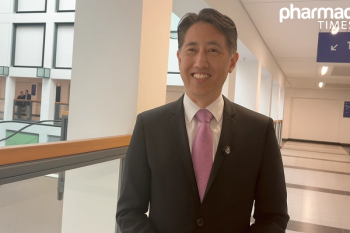
Rising Incidence of Severe, Complicated Pneumococcal Pneumonia in Children Post Pandemic
Key Takeaways
- The incidence of severe pediatric bacterial pneumonia has increased post COVID-19, necessitating revised treatment strategies.
- Streptococcus pneumoniae remains a major cause of pediatric pneumonia despite available vaccines, leading to significant health care burdens.
New research highlights a surge in pediatric pneumococcal pneumonia cases post COVID-19, urging a shift toward supportive treatment strategies.
Investigators in Infection and Drug Resistance published new data indicating that the incidence of bacterial pneumonia—mainly pneumococcal—and its severe forms has increased, especially since the emergence of the COVID-19 pandemic. They emphasize the need for a multidisciplinary approach to monitoring and treating pediatric pneumococcal pneumonia.1
The results, garnered from a retrospective, single-center study of children at Thomayer University Hospital (TUH) diagnosed with pneumonia from 2019 to 2024, suggest that complicated cases of bacterial pneumonia are becoming more frequent in pediatrics and may necessitate a change in treatment strategies for primary care physicians and pharmacists.1
Major Burden of Pneumonia in Pediatric Patients
Community-acquired pneumonia (CAP) is one of the most common infectious diseases in children and remains a frequent reason for hospitalization. Despite being familiar to pediatricians, it continues to pose a significant burden on health care systems due to its potential for serious complications when not treated promptly or adequately. Streptococcus pneumoniae (S pneumoniae) is a major bacterial pathogen that can cause pediatric CAP. Vaccines are available to prevent severe disease, but S pneumoniae remains the leading cause of bacterial pneumonia in children.1,2
In the event of severe complications, such as pleural effusion, empyema, or necrotizing pneumonia with cavity formation, treatment providers may need to resort to invasive therapeutic procedures. The authors hypothesized that, since the beginning of the COVID-19 pandemic, there had been an increase in the prevalence of complicated cases of pneumonia requiring surgical interventions. To investigate further, they conducted the present study, with the goal of enhancing patient management, optimizing treatment protocols, and formulating strategies for invasive procedures.1
Increased Presence of Pneumonia Post Pandemic
Patients included in the analysis were divided into 2 groups: those with proven pneumonia or highly suspected S pneumoniae infection and those with a proven infection with a bacterium other than S pneumoniae—namely Mycoplasma pneumoniae, the second leading cause of bacterial pneumonia in children. However, the trial primarily focused on investigating suspected pneumococcal pneumonia (SPP). The authors defined complicated pneumonia as a severe illness involving at least 1 local complication.1
Between January 2019 and December 2024, 305 pediatric patients with CAP were admitted to TUH. Before the pandemic in 2019, the hospitalization rate was 14.1%. Contrastingly, during the pandemic years of 2020 and 2021, the hospitalization rate was significantly lower, at 2.3% and 5.6%, respectively. Records from 2024 indicated that 35.4% of all diagnosed children with pneumonia were hospitalized. However, there were no deaths from pneumonia during the study period, which is a positive observation.1
Among all the patients with CAP, 181 (59.3%) were identified as having SPP. At the same time, 38 patients (12.5%) were diagnosed with Mycoplasma pneumoniae-based pneumonia. Investigators identified a total of 28 complicated courses of CAP, representing 9.2% of all included cases, with 22 cases in the SPP group. Twelve (3.9%) patients required a form of invasive intervention, of whom 7 were in the SPP group.1
The authors also evaluated admission to the pediatric intensive care unit (PICU). Of the total number of patients with CAP, 20 (6.55%) children required admission to the PICU for at least a portion of their hospitalization due to perioperative care, respiratory failure, or both. Specifically, 79 patients required oxygen therapy, 9 required high-flow nasal cannula oxygenation therapy, and 4 were supported by invasive artificial lung ventilation, according to the investigators. Additionally, in all years except 2020, a significantly higher proportion of patients did not get treated with antibiotics before hospital admission.1
Supportive Therapy, Not Invasive Surgery, Recommended for Pneumonia
Although antibiotics are typically effective against pneumococcal pneumonia, an increasing number of cases are presenting with complications—often requiring more aggressive or invasive interventions such as hospitalization, intravenous antibiotics, or respiratory support. Based on these results, the study authors suggested that a less invasive surgical approach could provide greater benefits and less intensive treatment to pediatrics with pneumonia.1
Pharmacists play an integral role in monitoring pediatric patients and referring them to a hospital setting if their condition presents as pneumococcal pneumonia. In the hospital, pharmacists are critical to advocating for the patient and providing effective, compassionate, and supportive therapy to help manage their condition. Before a child becomes infected, pharmacists should present as front-facing, trusting health care providers who encourage vaccination and position it as protection against pneumococcal disease.1
“When provided with sufficient time, patients benefit from the full effect of supportive therapy and their intrinsic capacity to heal and recuperate from damage caused by severe disease,” the study authors wrote in their discussion. “We believe that even a longer hospital stay is a good price to pay for the preservation of all 5 lobes of the lung, especially in terms of childhood and later life.”1
REFERENCES
1. Heinige P, Slovakova L, Vockova J, et al. Impact of the COVID-19 Pandemic on Pediatric Pneumonia Outcomes: A Five-Year Retrospective Cohort Study. Infect Drug Resist. 2025;18:3511-3525. doi:10.2147/IDR.S524238
2. Yun KW. Community-acquired pneumonia in children: updated perspectives on its etiology, diagnosis, and treatment. Clin Exp Pediatr. 2024;67(2):80-89. doi:10.3345/cep.2022.01452
Newsletter
Stay informed on drug updates, treatment guidelines, and pharmacy practice trends—subscribe to Pharmacy Times for weekly clinical insights.

















































































































































































































